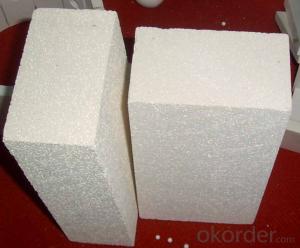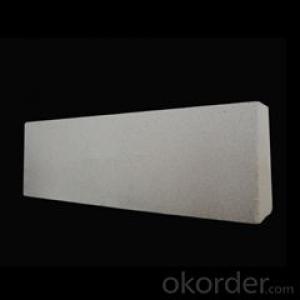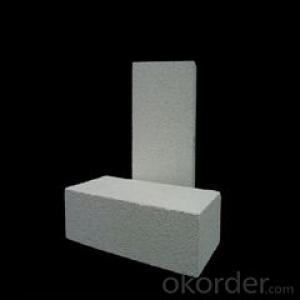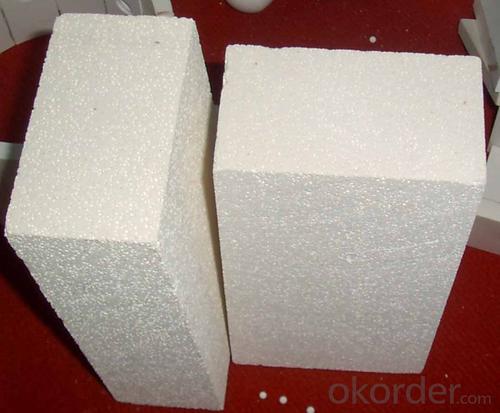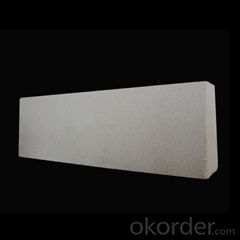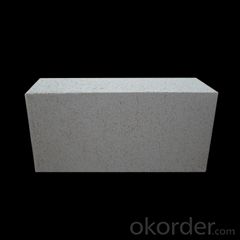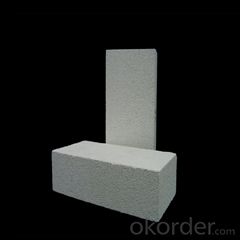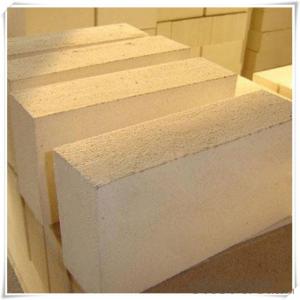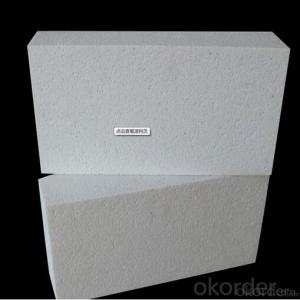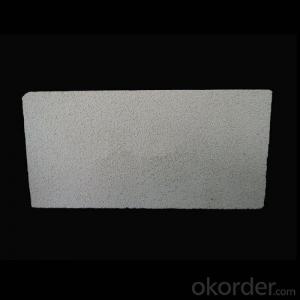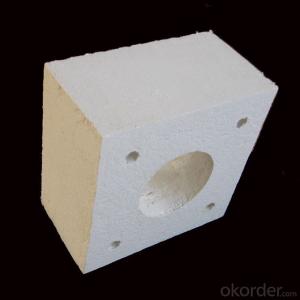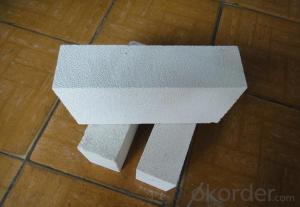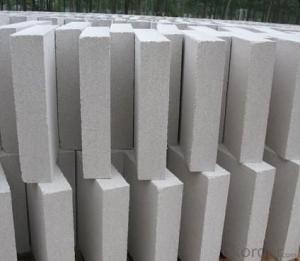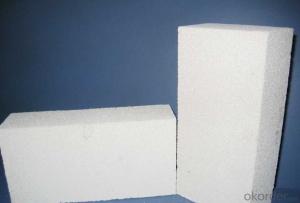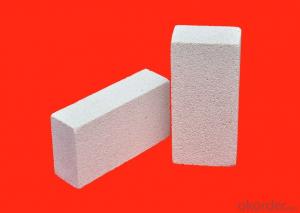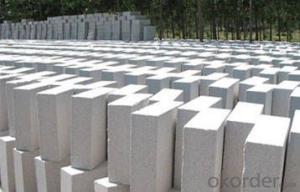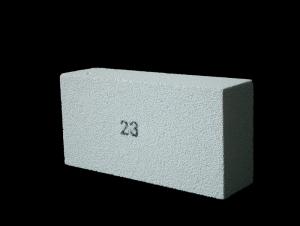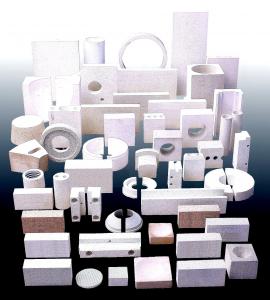Insulating Fire Brick - Refractory Mullite Insulating Refractory Brick JM 89
- Loading Port:
- Shanghai
- Payment Terms:
- TT OR LC
- Min Order Qty:
- 5000 kg
- Supply Capability:
- 10000 kg/month
OKorder Service Pledge
OKorder Financial Service
You Might Also Like
Refractory mullite insulating refractory brick JM 23
Okorder series heat insulation brick
Okorder series thermal insulation brick is an effective, energy saving, low carbon, environmental protection advanced, according to the ASTM standard manufacturing products. Okorder series products are best Li Ning and insulation in all types of industrial furnaces in the metallurgical field, aluminum, petrochemical, electric power and glass ceramic materials. They can be used as part of the working layer of thermal insulation or non - melting. Products have been widely used in the following furnace, achieved satisfactory results.
Application of heat preservation brick
Metallurgical Industry: blast furnace, hot blast furnace, heating furnace, etc..
Petrochemical Industry: ethylene cracking furnace, hydrogen production furnace, primary reformer, heating furnace, etc..
Ceramic industry: roller kiln, kiln, etc..
Glass industry: glass furnace regenerator, etc.
Carbon industry: carbon furnace, etc..
Aluminum electrolysis industry: aluminum reduction cell, etc.
Other industries: tunnel kiln, shuttle kiln, etc..
Advantages of heat insulation brick
Low thermal conductivity: more porosity will bring good thermal insulation effect, energy saving.
High crushing strength: high crushing strength, volume stability.
Low heat storage: small heat storage to absorb more heat, energy-saving effect is obvious.
Gao Chundu: iron, alkali metal impurity content is low.
The precise size: Brick size processing precision, special shape cutting and grinding, accelerate the brickwork.
Insulating brick picture
Common problem solutions
1. What products do you have?
We have all kinds of refractory bricks, refractory casting materials, mortar, cement, ceramic fiber products, etc..
Or you can browse our products to choose what you need.
2. How to control product quality?
With strict quality control system throughout the material selection and production process, we have the quality of refractory materials and ceramic fiber products to meet customer requirements.
From the selection of raw materials, the quality of our control to start. The quality certificate of the raw material is required, each batch of the products are to be tested in the use of the forward line. In the production process, the quality control by the workers, and then each piece of classification, and through the quality supervision and inspection.
3. Can you give me a brief introduction to the application of your product?
My company is mainly engaged in refractories in the steel, cement, glass, ceramics, petrochemical, electric power and other industries.
4. What information do you need if I need you?
In order to select the right products, we will provide us with information, such as the United States, technical data, order quantity, product application, etc..
If you have any questions, please contact us.

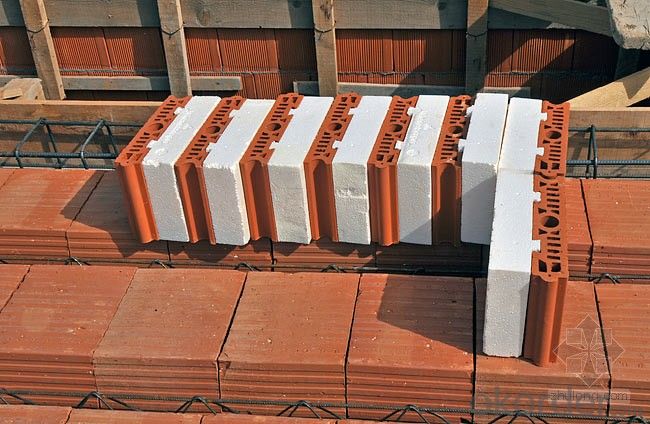
- Q: Are insulating fire bricks lightweight or heavy?
- Insulating fire bricks are lightweight. These bricks are specifically designed to have low density and high insulating properties. They are made from lightweight materials such as expanded clay, perlite, and vermiculite, which contribute to their lightweight nature. This makes them easier to handle and install compared to traditional heavy fire bricks. However, despite being lightweight, insulating fire bricks still offer excellent thermal insulation, making them ideal for various applications including kilns, furnaces, and fireplaces.
- Q: What are the advantages of using insulating fire bricks over traditional bricks?
- There are several advantages of using insulating fire bricks over traditional bricks. Firstly, insulating fire bricks have significantly better thermal insulation properties compared to traditional bricks. This means that they are able to retain heat more efficiently and prevent heat loss. This makes them ideal for applications where temperature control is essential, such as in industrial furnaces, kilns, and ovens. By reducing heat loss, insulating fire bricks can help to improve energy efficiency and reduce heating costs. Secondly, insulating fire bricks have a higher melting point than traditional bricks, making them more resistant to high temperatures. This makes them suitable for use in environments with extreme heat, such as in metallurgical and glass industries. Insulating fire bricks can withstand temperatures up to 3000°F (1650°C), whereas traditional bricks typically have a lower melting point. Furthermore, insulating fire bricks are lightweight and have a low thermal mass. This means that they heat up quickly and cool down rapidly, making them suitable for applications that require frequent temperature changes or quick heat-up times. Traditional bricks, on the other hand, have a higher thermal mass and take longer to heat up or cool down. Additionally, insulating fire bricks are more resistant to thermal shock and can withstand rapid temperature changes without cracking or breaking. This makes them more durable and long-lasting compared to traditional bricks, which are more prone to damage from thermal cycling. Moreover, insulating fire bricks are often easier to install and handle than traditional bricks due to their lightweight nature. They are also available in various sizes and shapes, allowing for more flexibility in construction and design. This can help to reduce labor and installation costs. In summary, the advantages of using insulating fire bricks over traditional bricks include better thermal insulation properties, higher melting point, lightweight and low thermal mass, resistance to thermal shock, durability, and ease of installation. These benefits make insulating fire bricks a preferred choice in various high-temperature applications, providing improved energy efficiency, cost savings, and better overall performance.
- Q: Can insulating fire bricks be used in the construction of lime production molds?
- Yes, insulating fire bricks can be used in the construction of lime production molds. Insulating fire bricks are designed to have high thermal resistance, making them ideal for applications that require insulation and protection from high temperatures. Lime production molds often involve high temperatures during the firing process, and insulating fire bricks can help maintain the desired temperature and prevent heat loss. Additionally, the insulating properties of these bricks can help reduce energy consumption and improve the efficiency of the lime production process. Therefore, using insulating fire bricks in the construction of lime production molds is a suitable choice.
- Q: Can insulating fire bricks be used for insulation in residential walls?
- Insulating fire bricks are primarily designed for high-temperature applications, such as in kilns or furnaces. While they do provide excellent insulation properties, they are not typically recommended for use in residential walls. The reason is that insulating fire bricks may not meet the specific building codes and regulations required for residential construction. Additionally, there are other insulation materials available that are better suited for residential walls, such as fiberglass or foam insulation, which are more cost-effective and easier to install.
- Q: Are insulating fire bricks resistant to weathering?
- Yes, insulating fire bricks are resistant to weathering.
- Q: Can insulating fire bricks be used in the construction of glass slump molds?
- Insulating fire bricks can indeed be utilized in the construction of glass slump molds. These bricks are composed of lightweight materials capable of enduring high temperatures, rendering them appropriate for kilns and other heat-intensive applications. When creating a glass slump mold, it is crucial to possess a material capable of withstanding the heat generated as the glass slumps and takes form. Insulating fire bricks offer the necessary insulation and heat resistance essential for this procedure. They can be cut and shaped to accommodate the desired mold design without succumbing to degradation or crumbling, even after repeated firings. As a whole, insulating fire bricks present a dependable and long-lasting choice for constructing glass slump molds.
- Q: What are the insulation materials for heating buried pipelines?
- The heat preservation layer is composed of antirust paint, heat insulating material, moisture-proof layer (used for pipeline in the trench), protective layer, anticorrosive layer (used for trench or directly buried pipe) and top coat (or fireproof coating).The waterproof layer can be used asphalt or aluminum foil protective layer with glass cloth or galvanized steel.
- Q: Are insulating fire bricks resistant to gas permeability?
- Yes, insulating fire bricks are resistant to gas permeability. They have low porosity and high density, which prevents the penetration of gases, making them an effective barrier against gas permeation.
- Q: Can insulating fire bricks be used in the construction of thermal insulation roofs?
- Insulating fire bricks are indeed applicable in the construction of thermal insulation roofs. Their design is tailored to possess exceptional thermal insulation characteristics, rendering them a perfect option for heat retention and energy efficiency needs. These bricks are crafted from lightweight materials like clay, which exhibit low thermal conductivity and remarkable resistance to heat transfer. Consequently, they effectively minimize heat loss or gain, making them suitable for thermal insulation roofs. Moreover, insulating fire bricks showcase durability and the ability to endure high temperatures, establishing them as a dependable choice for long-lasting utilization in roofing applications.
- Q: Can insulating fire bricks be used in electric arc furnaces?
- Yes, insulating fire bricks can be used in electric arc furnaces. These bricks are designed to withstand high temperatures and provide excellent thermal insulation, making them suitable for use in electric arc furnaces where extreme heat is generated. Insulating fire bricks help to reduce heat loss and improve energy efficiency in the furnace, making them a valuable component in the construction of electric arc furnaces.
Send your message to us
Insulating Fire Brick - Refractory Mullite Insulating Refractory Brick JM 89
- Loading Port:
- Shanghai
- Payment Terms:
- TT OR LC
- Min Order Qty:
- 5000 kg
- Supply Capability:
- 10000 kg/month
OKorder Service Pledge
OKorder Financial Service
Similar products
Hot products
Hot Searches
Related keywords
